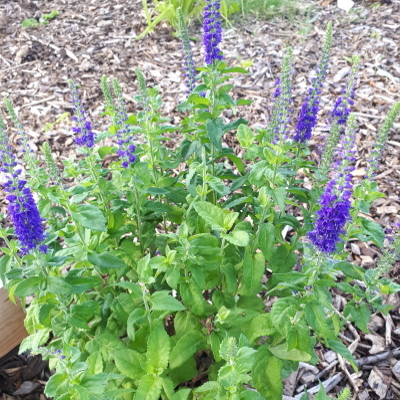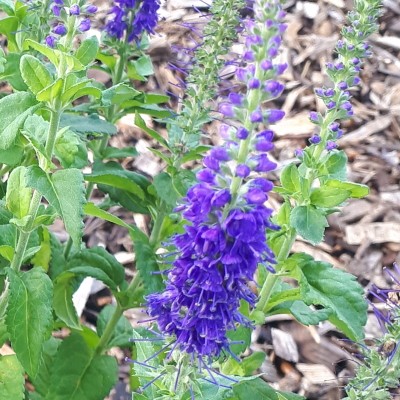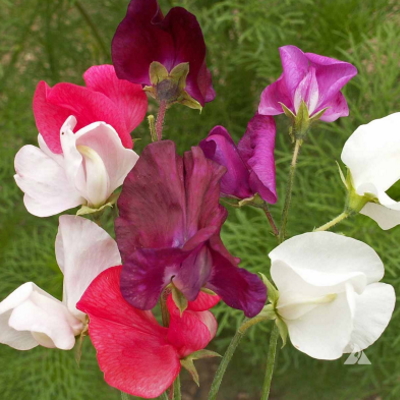-
Out of stock
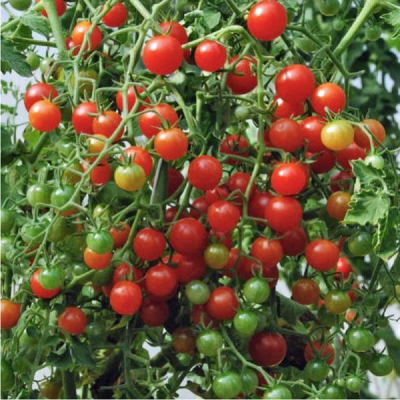 Red Currant plants produce copious quantities of small 1 cm, deep red tomatoes that are exceptionally sweet and packed with flavour. They typically require around 75 days to reach maturity, and make a good choice for containers and hanging baskets, though they are indeterminate growers. Currant tomatoes are native of Peru and Brazil. It was illustrated by Louis Feuille in 1725 Perfect for snacking tomatoes directly from the garden. Great for summer salads. Fruits from early summer until fall frost. Each plant produces 1000's of tiny tomatoes. Best for hanging baskets.
Red Currant plants produce copious quantities of small 1 cm, deep red tomatoes that are exceptionally sweet and packed with flavour. They typically require around 75 days to reach maturity, and make a good choice for containers and hanging baskets, though they are indeterminate growers. Currant tomatoes are native of Peru and Brazil. It was illustrated by Louis Feuille in 1725 Perfect for snacking tomatoes directly from the garden. Great for summer salads. Fruits from early summer until fall frost. Each plant produces 1000's of tiny tomatoes. Best for hanging baskets. -
Out of stock
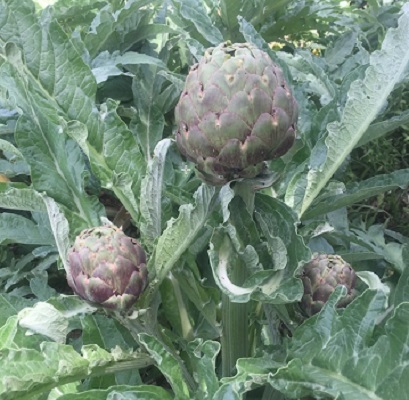
 Start seed indoors in a soil-less mix 8-12 weeks before the last frost date in your area. Sow the seed 6 mm (1/4″) deep and germinate at 21-26 C (70-80 F). When seedlings are 2.5-5 cm (1-2″) high transplant to individual 10 cm (4″) pots and grow on at 15-21 C. Harden off and transplant to the garden after the threat of frost has passed. Artichoke does best in full sun with a deep, organic, fertile soil. Space plants 60-90 cm (24-36″) apart in the row with rows 1.75 m (6′) apart. Keep plants evenly watered and mulch the soil to help preserve soil moisture and keep the soil from becoming too warm in summer. If the soil does become too warm, it can trigger a summer dormant period. Start with a thin layer of mulch and build it up to 10 cm (4″) thick as the plants grow.
Start seed indoors in a soil-less mix 8-12 weeks before the last frost date in your area. Sow the seed 6 mm (1/4″) deep and germinate at 21-26 C (70-80 F). When seedlings are 2.5-5 cm (1-2″) high transplant to individual 10 cm (4″) pots and grow on at 15-21 C. Harden off and transplant to the garden after the threat of frost has passed. Artichoke does best in full sun with a deep, organic, fertile soil. Space plants 60-90 cm (24-36″) apart in the row with rows 1.75 m (6′) apart. Keep plants evenly watered and mulch the soil to help preserve soil moisture and keep the soil from becoming too warm in summer. If the soil does become too warm, it can trigger a summer dormant period. Start with a thin layer of mulch and build it up to 10 cm (4″) thick as the plants grow. -
-
Out of stock
 This delightful Japanese Catmint has many merits. Both the foliage and the flowers are fragrant. It blooms the first year from seed, unlike most perennials. It is upright and nicely branched, rather than sprawling. Make it a centerpiece of your containers and sunny-to-partly-shaded garden areas! Panther Dark Blue walked off with the Bronze Medal at Holland's prestigious Plantarium competition in 2015. The attractive little plant is much more compact than other catmint species, standing just 20 cm high and 25 cm wide. The foliage is bright green, glossy, and toothed, releasing a strong, heavenly fragrance from spring through fall. Profuse bloomer! Medium to dark blue, these tubular flowers reach up to 5 cm long, held in nice clusters on the top of the plant. The blossoms are fragrant, and they begin in early summer and go right through into early fall. You'll be amazed by the flower power of this petite plant.
This delightful Japanese Catmint has many merits. Both the foliage and the flowers are fragrant. It blooms the first year from seed, unlike most perennials. It is upright and nicely branched, rather than sprawling. Make it a centerpiece of your containers and sunny-to-partly-shaded garden areas! Panther Dark Blue walked off with the Bronze Medal at Holland's prestigious Plantarium competition in 2015. The attractive little plant is much more compact than other catmint species, standing just 20 cm high and 25 cm wide. The foliage is bright green, glossy, and toothed, releasing a strong, heavenly fragrance from spring through fall. Profuse bloomer! Medium to dark blue, these tubular flowers reach up to 5 cm long, held in nice clusters on the top of the plant. The blossoms are fragrant, and they begin in early summer and go right through into early fall. You'll be amazed by the flower power of this petite plant. -
Out of stock
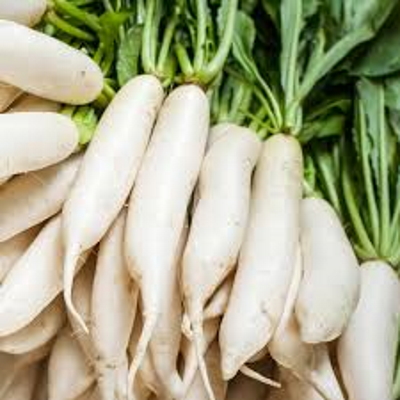 A very popular mild flavoured Japanese radish that resembles a large white carrot. Crisp, tender roots average 20 cm in length and 7 cm in diameter. The vitamin-rich roots are superb when eaten raw, sliced in salads, or peeled and diced for soups and stews. Try leaving some to grow seed pods which are delicious in salads or save your seeds for future plantings. Radishes thrive in very loose rich soil, plenty of water, and best grown in cooler weather.
A very popular mild flavoured Japanese radish that resembles a large white carrot. Crisp, tender roots average 20 cm in length and 7 cm in diameter. The vitamin-rich roots are superb when eaten raw, sliced in salads, or peeled and diced for soups and stews. Try leaving some to grow seed pods which are delicious in salads or save your seeds for future plantings. Radishes thrive in very loose rich soil, plenty of water, and best grown in cooler weather. -
Out of stock
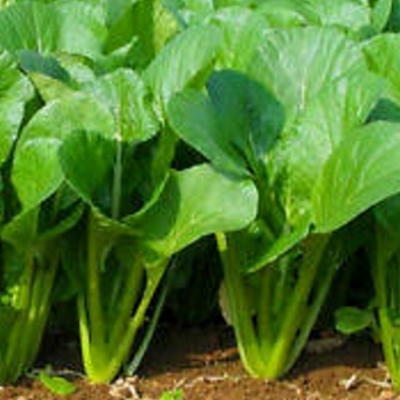
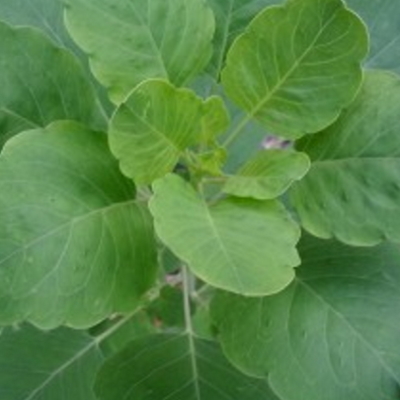
Ethiopian Kale matures in 40 days. Technically, a Mustard, Ethiopian Kale is an unusual leafy green. The hearty leaves have a very complex flavor with overtones of spice and garlic. Great for picking at the baby size in under 3 weeks, or waiting for fully grown leaves. Ethiopian Kale works great makes delicious salad mix, standalone raw, or lightly cooked. An extra cold-tolerant and drought-resistant crop. If you're going to try only one new green this year, Ethiopian Kale should be your first choice.
-
Out of stock
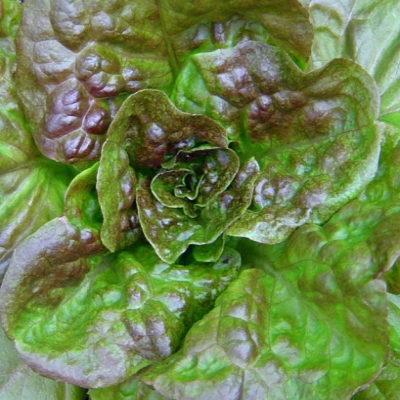 Bronze Mignonette is a Butterhead Heirloom Lettuce Bronze Mignonette is a heat-tolerant and slow to bolt butterhead lettuce variety that has been around for over 100 years. It's bronze leaves are crisp and perfect for salads and sandwiches Frilled green leaves have a bronze tinge with a cream coloured heart. Large heads and tender buttery leaves tipped in red are a rare treat. Plants need plenty of space to reach the full potential of this lettuce so keep plants 45 cm apart. Plant in lots of organic well-drained fertile soil. Harvest early in the morning to obtain the best flavour. Keep soil evenly moist for best growth. Plant every 2 weeks from early spring until August to maintain fresh crop all summer.
Bronze Mignonette is a Butterhead Heirloom Lettuce Bronze Mignonette is a heat-tolerant and slow to bolt butterhead lettuce variety that has been around for over 100 years. It's bronze leaves are crisp and perfect for salads and sandwiches Frilled green leaves have a bronze tinge with a cream coloured heart. Large heads and tender buttery leaves tipped in red are a rare treat. Plants need plenty of space to reach the full potential of this lettuce so keep plants 45 cm apart. Plant in lots of organic well-drained fertile soil. Harvest early in the morning to obtain the best flavour. Keep soil evenly moist for best growth. Plant every 2 weeks from early spring until August to maintain fresh crop all summer. -
Out of stock
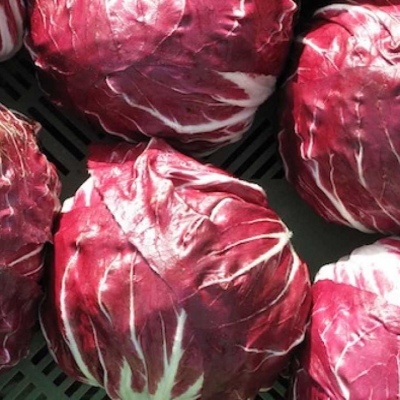 Although this is called a challenging crop to grow, it is not quite so challenging in the Calgary climate. It does take a bit more work but the use of the young leaves then heads later makes the work more than worthwhile. The young fresh heads are a visual delight for the eyes and a culinary treat for the taste buds! A spreading, leafy plant producing open, round heads 5-10 cm in diameter. Beautiful dark red leaves that withstand considerable frost. Follow our planting instructions for our foolproof method of growing great Radicchio. A cold frame or a basement is all that's needed to enjoy these culinary delights.
Although this is called a challenging crop to grow, it is not quite so challenging in the Calgary climate. It does take a bit more work but the use of the young leaves then heads later makes the work more than worthwhile. The young fresh heads are a visual delight for the eyes and a culinary treat for the taste buds! A spreading, leafy plant producing open, round heads 5-10 cm in diameter. Beautiful dark red leaves that withstand considerable frost. Follow our planting instructions for our foolproof method of growing great Radicchio. A cold frame or a basement is all that's needed to enjoy these culinary delights. -
Out of stock
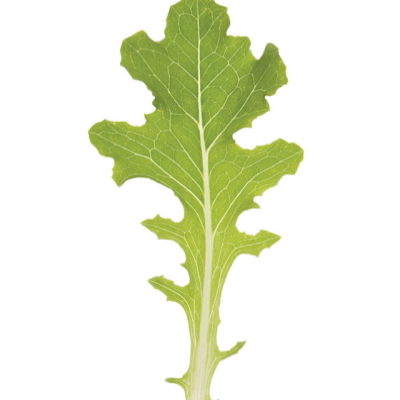 The unique and varied oak style leaf of Bolsachica Organic adds loft and character to baby leaf salad mixes. The leaves are medium to dark green and a bit thicker than others. They grow almost straight upright which makes baby leaf harvesting much easier. Grow this baby leaf lettuce in trays or containers. Cut outside leaves and let inside leaves for future harvests.
The unique and varied oak style leaf of Bolsachica Organic adds loft and character to baby leaf salad mixes. The leaves are medium to dark green and a bit thicker than others. They grow almost straight upright which makes baby leaf harvesting much easier. Grow this baby leaf lettuce in trays or containers. Cut outside leaves and let inside leaves for future harvests. -
Out of stock
 There is a very good reason why Red Salad Bowl is among the most popular lettuces. Red Salad Bowl is a variety of looseleaf lettuce with oakleaf type leaves. The deep red and purple leaves are especially tender, with sweet and spicy tones. Red Salad Bowl is best grown during the cooler portions of the growing season in spring or fall, though it is slow to bolt in warmer conditions. The leaves are commonly used in salads. The baby greens can first be harvested approximately 25 days after germinating. Try growing some in containers,
There is a very good reason why Red Salad Bowl is among the most popular lettuces. Red Salad Bowl is a variety of looseleaf lettuce with oakleaf type leaves. The deep red and purple leaves are especially tender, with sweet and spicy tones. Red Salad Bowl is best grown during the cooler portions of the growing season in spring or fall, though it is slow to bolt in warmer conditions. The leaves are commonly used in salads. The baby greens can first be harvested approximately 25 days after germinating. Try growing some in containers, -
Out of stock
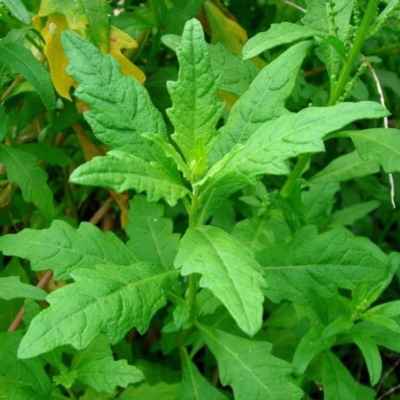
This annual Mexican herb has a pungent aroma, spear-shaped, deeply toothed leaves, and green flowers. It is also known as Wormseed, American Wormseed, Mexican Tea or Herba Sancti Mariae. Epazote's (eh-pah-ZOH-teh) fragrance is strong and pungent. It has been compared to citrus, petroleum, savory, mint, or camphor. It smells pretty strong, but we have found that it does add a wonderful depth of flavor to a pot of beans! With its strong taste and aroma, not everyone takes to it right away, but used as a spice, it adds a wonderful rustic layer of flavor to many Mexican and Latin American dishes, giving them an extra dimension of flavor that just can’t be replicated with any other herb – very similar to the “umami” flavors of fermented Asian ingredients. Epazote leaves are used for their pungent flavor and aroma to season soup, corn, beans, and shellfish in Mexico. It is used in beans to prevent flatulence. It is also brewed for "Jesuit Tea" but the herb's main use is to expel intestinal worms from humans and animals. Oil of chenopodium is derived from this plan.
-
Out of stock
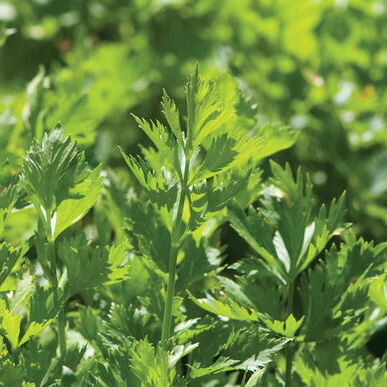
Leafy herb with bold celery flavor. Easier to grow than standard celery. A versatile ingredient for salads, soups, stews, and vegetable medleys. More intense flavour (both fresh and dried) than garden celery.
-
Out of stock
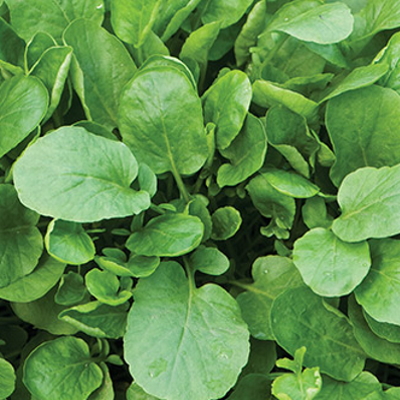
Upland Cress is slow to start but, once established, easy to grow. Long-standing and slow bolting. Harvest by cutting individual leaves or by picking the 15-18 cm rosettes of dark green, glossy, rounded leaves. Salad's come to life with the nutrient-packed upland cress leaves added. Cut the leaves when they are 2-5 cm tall. The leaves grow back in 2-3 weeks. Harvest as desired through the growing season.
Many common names of Barbarea verna are )Upland or Winter Cress), Early Yellow-rocket, Early Yellowrocket, Land Cress, Peppergrass, Upland Cress, Winter Cress -
Out of stock
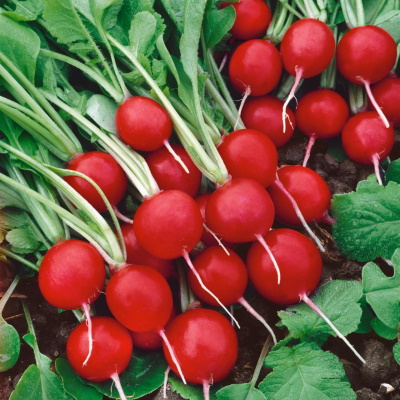
Early, organic, round red radish.
Try leaving some to grow seed pods which are delicious in salads or save your seeds for future plantings. Radishes thrive in very loose rich soil, plenty of water, and best grown in cooler weather.Roots are bright red, smooth, and uniform with good flavor. Best for spring and fall plantings. Crops sown in hot weather tend to produce roots that are less uniform and become pithy earlier than hybrids.
-
Out of stock
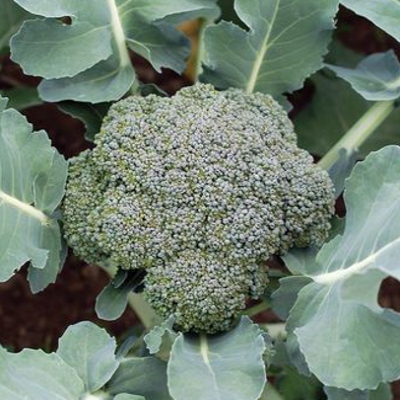 Blue Winds Broccoli is the most popular broccoli. This extra-early maturing broccoli produces impressively large, tightly beaded heads. The large plants are tightly beaded and sport powdery light blue foliage. They have strong-stems with densely packed heads. After harvesting of main head, Blue Winds Brocolli has good side shoot production will supply a continued harvest of delicious florets! One of the only hybrid crops we grow!
Blue Winds Broccoli is the most popular broccoli. This extra-early maturing broccoli produces impressively large, tightly beaded heads. The large plants are tightly beaded and sport powdery light blue foliage. They have strong-stems with densely packed heads. After harvesting of main head, Blue Winds Brocolli has good side shoot production will supply a continued harvest of delicious florets! One of the only hybrid crops we grow! -
-
Out of stock
 A much-loved heirloom cabbage with solidly tight, conical, folded heads 13-18cm in diameter, and 26-39cm tall. Planted individually, Early Jersey Wakefield cabbage seeds will form a plant up to 1m in diameter. This cabbage has smooth, thick green leaves that are perfect for coleslaw. They can be harvested in summer or overwintered, and they resist splitting in wet weather. Early Jersey Wakefield cabbage seeds were first grown in the U.S. by Francis Brill of Jersey City in 1840.
A much-loved heirloom cabbage with solidly tight, conical, folded heads 13-18cm in diameter, and 26-39cm tall. Planted individually, Early Jersey Wakefield cabbage seeds will form a plant up to 1m in diameter. This cabbage has smooth, thick green leaves that are perfect for coleslaw. They can be harvested in summer or overwintered, and they resist splitting in wet weather. Early Jersey Wakefield cabbage seeds were first grown in the U.S. by Francis Brill of Jersey City in 1840. -
Out of stock

A stellar bulbing Florence fennel with an excellent sweet anise-like flavor that mellows with cooking. Selma Fino is usually the sweetest tasting. Takes about 80 days to form full-sized bulbs, however, it can be harvested sooner at a smaller size. Very white bulbs are fairly uniform and won’t prematurely bolt if planted in spring. Tops can be used as a fresh herb, adding a mellow fennel flavor to dishes or salads. Unique compared to other bulb type fennel, some plants have a perennial nature. The flowers are highly attractive to bees and other beneficial insects. Fennel leaves, florets, and seeds can be used for culinary purposes as an herb.
-
Out of stock
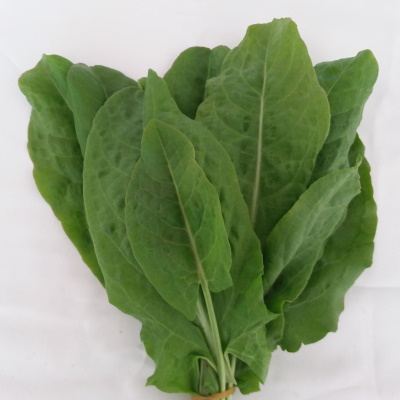
The herbal lemony flavor of sorrel makes a great addition to salads, sauces, or soups. A famed companion to fish. Will produce the most tender leaves in cool weather. Sow in spring or fall. Once established, can be propagated by root division. Hardy in zone 4-8. Perennial.
-
Out of stock
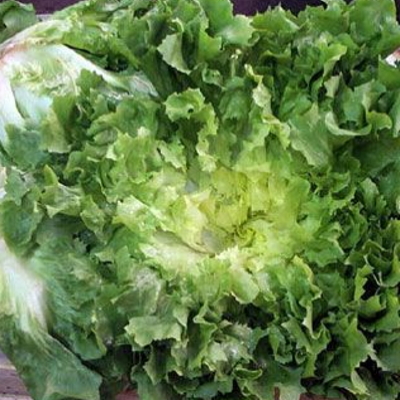 This escarole type of endive has dark green leaves that are broad, coarse and crumpled in appearance but not curly. Popular as an addition to any salad or may be cooked as greens. Harvest as you would lettuce by cutting them just below the lower leaves. They will withstand a touch of frost but not a hard freeze.
This escarole type of endive has dark green leaves that are broad, coarse and crumpled in appearance but not curly. Popular as an addition to any salad or may be cooked as greens. Harvest as you would lettuce by cutting them just below the lower leaves. They will withstand a touch of frost but not a hard freeze. -
Out of stock
 Also known as mountain spinach, this green has been cultivated since Roman times. Harvest young leaves 3-7 cm long for fresh use. Larger leaves are often used steamed. A colorful and nutritious addition to salads. Leaves can continue to be harvested until the plant goes to seed. Can be grown into summer somewhat longer than true spinach. Germinated in 7-14 days. Maturity from 20 to 60 days.
Also known as mountain spinach, this green has been cultivated since Roman times. Harvest young leaves 3-7 cm long for fresh use. Larger leaves are often used steamed. A colorful and nutritious addition to salads. Leaves can continue to be harvested until the plant goes to seed. Can be grown into summer somewhat longer than true spinach. Germinated in 7-14 days. Maturity from 20 to 60 days. -
 Bridal Silk is a Shirley poppy. Shirley poppies thrive in cool temperatures and must be sown when the soil is still cold. 'Bridal Silk' has glistening pure-white chalice-shaped flowers in glorious bloom during early summer, new flowers opening every morning as the old flowers shed their petals. These plants prefer evenly moist soil but can tolerate drought. About an inch of water per week is more than sufficient once they are established. Plant height 45-60 cm.
Bridal Silk is a Shirley poppy. Shirley poppies thrive in cool temperatures and must be sown when the soil is still cold. 'Bridal Silk' has glistening pure-white chalice-shaped flowers in glorious bloom during early summer, new flowers opening every morning as the old flowers shed their petals. These plants prefer evenly moist soil but can tolerate drought. About an inch of water per week is more than sufficient once they are established. Plant height 45-60 cm. -
-
 Double flowers with a silky appearance in shades of pink, white, red, rose, and salmon on 80 cm stems. Strong plants perform well in the heat and drought even though they are considered a cool-season plant. Sow Shirley Double Mix poppy seeds at two-week intervals from late February to mid-April for flowers from mid- to late summer. These poppies will self-sow, and they look spectacular in mass plantings. The flowers have a very delicate appearance, but the plants are actually quite tough. For cut flowers use a candle to sear the stem ends to help them last several days. Rely on Shirley Double to self-sow without becoming weedy.
Double flowers with a silky appearance in shades of pink, white, red, rose, and salmon on 80 cm stems. Strong plants perform well in the heat and drought even though they are considered a cool-season plant. Sow Shirley Double Mix poppy seeds at two-week intervals from late February to mid-April for flowers from mid- to late summer. These poppies will self-sow, and they look spectacular in mass plantings. The flowers have a very delicate appearance, but the plants are actually quite tough. For cut flowers use a candle to sear the stem ends to help them last several days. Rely on Shirley Double to self-sow without becoming weedy.
